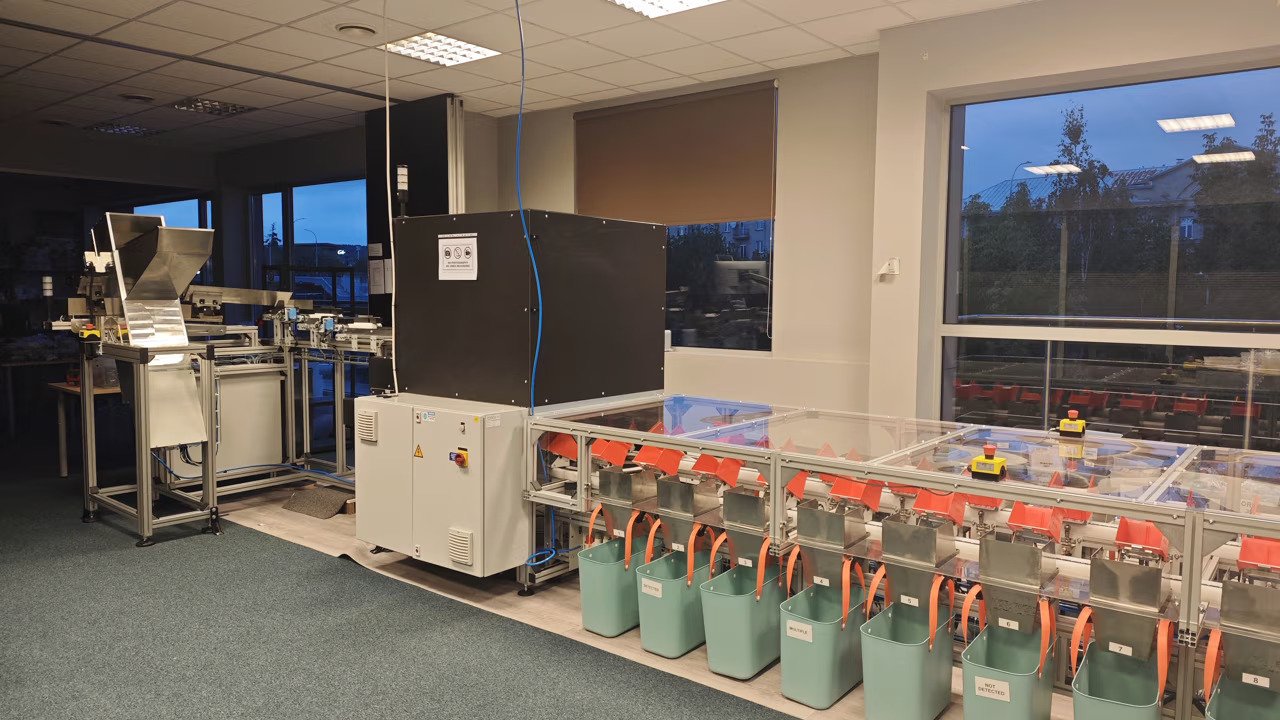Lithuania-based tech startup Sort A Brick has launched the world’s first automated industrial-grade system for recognising and sorting pre-owned LEGO® bricks, setting a new standard for the reuse and upcycling of one of the world’s most popular toys.
This launch comes as the company aims to raise €3 million in its next seed round to scale up its operations.
Sort A Brick is on a mission to bring billions of neglected toy-building bricks back to life! Using AI-powered computer vision and sorting technology, the company cleans, sorts, and repackages the customers’ used bricks into ready-to-build sets, helping them have fun while saving time, money, and the environment.
Check out our earlier interview with Sort A Brick co-founder Ilya Malkin.
Sort A Brick automates LEGO sorting with 99 per cent precision
The company’s inaugural system combines custom-built hardware, software and proprietary AI to tackle a long-standing challenge in the toy reuse sector: processing mixed piles of LEGO bricks quickly, reliably, and at scale.
Previously, the sorting process required careful manual handling and multiple scans per brick to achieve accurate results
The new system can accurately identify and sort more than 25,000 unique bricks across over 4,000 shapes and the 40 most popular colours, achieving greater than 99 per cent precision. It can also match recognised bricks to over 10,000 unique LEGO sets, organising mixed bricks into selected, build-ready sets in a fraction of the time required by manual sorting.
With its new system in operation and more than 420 orders totalling over 5,000 kilograms of bricks from 16 countries, Sort A Brick is leveraging advanced engineering to improve families’ access to sustainable play.
Unlocking precision and speed in automated sorting
At the heart of the new patent-pending system is a custom-engineered conveyor that recognises and sorts LEGO bricks automatically using computer vision trained on data from tens of thousands of bricks.
Loose bricks are poured into a feeder that separates them one by one.
Each brick then moves into a recognition chamber where AI identifies its specific shape, colour and other distinctive parameters, thus building a precise inventory for each customer’s collection.
The system can pick out even lookalike pieces with subtle differences while keeping the process moving quickly.
Once the full inventory of a customer’s brick collection is created, it is matched against parts-lists of already existing LEGO sets to find which sets can be rebuilt completely from the available bricks. If some bricks are missing, they will be added to make a set assembly-ready.
“The conveyor we’ve built is the first of its kind — an industrial-grade machine with exceptionally high accuracy that can process around 1,000 parts per hour,” says Ilya Malkin, Sort A Brick’s co-founder.
According to Malkin, the new conveyor can process up to three times the volume per hour while requiring less than a tenth of the human labour.
Rising demand for second-hand toys
The burgeoning growth in second-hand goods includes affordable toys, especially in the face of rising costs and changing consumption habits.
“We are seeing faster growth in the market for used toys, as families want options that balance affordability, quality, and a personal connection to what they already own,” says Malkin.
“We estimate that the secondary LEGO market has outpaced retail for the past five years, reaching around €1 billion in 2024.
Still, only a small fraction of LEGO bricks re-enter the resale market, with the majority confined to fan communities. With the right technology and services, we can unlock massive untapped demand for quality used sets in the mainstream market.”
The recent rise of collection schemes, like LEGO’s own Replay and Brick Take-Back programs, Magic Brix and Fairy Bricks in the UK, and BrickRecycler.com in the US, points to broader support for circular options.
These approaches focus on cleaning and redistributing loose bricks in partly pre-sorted arrangements. In contrast, Sort A Brick’s automated system makes it possible to return customer’s own bricks sorted into 100 per cent complete sets that are ready for rebuilding, thereby moving the industry closer to closed-loop use.
“We are now working on a next-generation conveyor that will operate at 20 times the speed of the current, to deliver unparalleled accuracy and throughput,” says Malkin.
“With every iteration of AI training, we are moving closer to our ultimate goal — recognising all LEGO parts in all colours ever produced.”
Plans are also underway to launch two pilot sorting centres in Western Europe to serve as a foundation for further expansion.
“Enhancing capacity means serving more families and meeting the growing interest in sustainable brick play across Europe and beyond.”
Lead image: Sort A Brick. Photo: uncredited.



Would you like to write the first comment?
Login to post comments